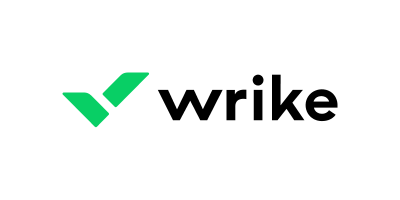Basecamp is a well-known project management tool that is favored by many teams for its ability to enhance collaboration and streamline workflows. It provides a suite of features, including task management, message boards, schedules and document storage, all within a user-friendly interface. However, it may not cater to everyone’s needs, as some teams might require more advanced features like Gantt charts or workload views, which Basecamp lacks. Others might prefer a per-user pricing model or a tool tailored to their industry. As a result, we’ve come up with a list of six top Basecamp alternatives.
Jump to:
- Top Basecamp competitors and alternatives: Comparison
- Is Basecamp worth it?
- Basecamp pros and cons
- Basecamp pricing
- Do you need an alternative to Basecamp?
- Methodology
Top Basecamp competitors and alternatives: Comparison
Before we delve into the comparison table, it’s worth noting that all the project management tools listed here, including Basecamp, offer essential features such as task management, advanced reporting and file sharing. These are fundamental parts of all the Basecamp alternatives we’re discussing.
| Software | Native time tracking | Customizable workflows | Gantt charts | Built-in automation | Starting price (per user) |
|---|---|---|---|---|---|
| Basecamp | No | No | No | No | $15/month |
| Monday.com | No | Yes | Yes | Yes | $8/month |
| Jira | No | Yes | Yes | Yes | $7.75/month |
| ClickUp | Yes | Yes | Yes | Yes | $5/month |
| Wrike | Yes | Yes | Yes | Yes | $9.80/month |
| Teamwork | Yes | Yes | Yes | Yes | $5.99/month |
| Asana | Yes | Yes | Yes | Yes | $10.99/month |
Featured partners
monday: Best for visual project management
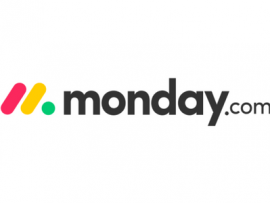
monday.com is a versatile project management platform that stands out for its highly visual and intuitive interface. It offers a variety of views, including Kanban, Gantt and timeline views, making it a flexible tool for different types of project management. This adaptability, coupled with a robust set of features, makes monday.com a great alternative to Basecamp, especially for teams that value visual project management.
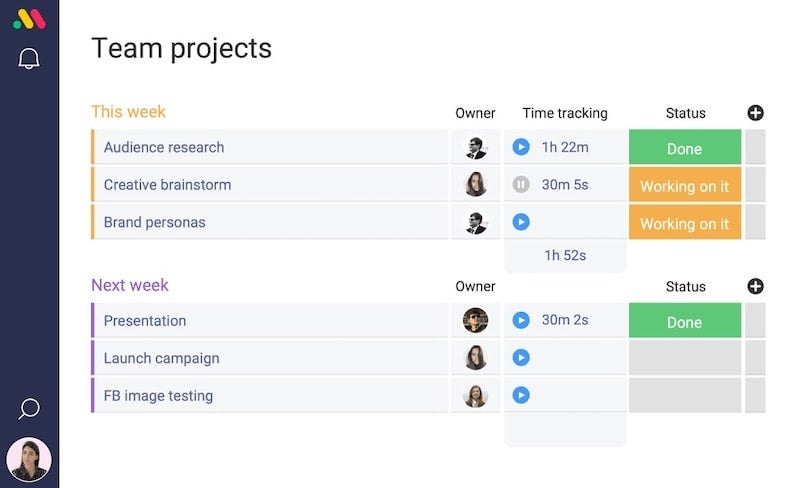
Features
- Customizable workflows that adapt to your team’s needs.
- Time tracking (Figure A) to keep tabs on productivity.
- Automation and integrations to streamline processes and ensure your different tools work together seamlessly.
- Advanced reporting for data-driven decision-making.
Pros
- Highly visual and intuitive, making project management more engaging.
- Versatile, with different views to suit various project management styles.
- Strong integration capabilities to connect with other tools your team uses.
Cons
- Can be overwhelming for new users due to the wide array of features.
- Higher price point compared to some alternatives, which might be a consideration for budget-conscious teams.
Pricing
In addition to its free plan, monday.com offers four pricing tiers: Basic, Standard, Pro and Enterprise. The Basic plan starts at $8 per user per month, while the Standard and Pro plans cost $10 and $16 per user per month when billed annually, respectively. Contact monday for Enterprise pricing information.
For more information, read the full monday review.
Jira: Best for software development teams

Jira by Atlassian is a project management tool specifically designed with software development teams in mind. It offers agile functionality, including Scrum and Kanban boards and deep integration with other Atlassian products. Software teams in particular will find Jira an attractive alternative to Basecamp, especially due to its robust feature set and standout agile features.
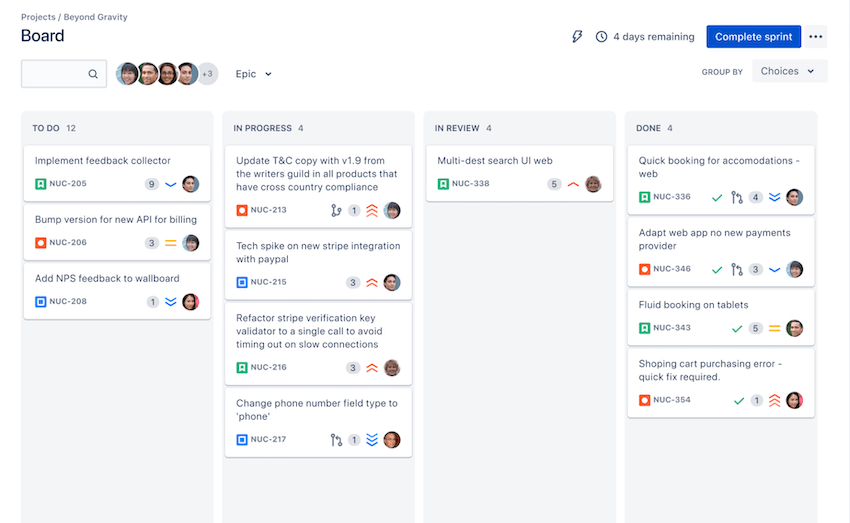
Features
- Agile development features to support Scrum (Figure B) and Kanban methodologies.
- Customizable workflows to fit your team’s development process.
- Deep integration with developer tools like Bitbucket, Confluence and CI/CD tools like Jenkins.
- Advanced reporting and analytics to track progress and performance.
Pros
- Robust features for software development, catering specifically to developers’ needs.
- Deep integration capabilities with other Atlassian products for a unified toolset.
- Scalable for large teams, making it suitable for growing organizations.
Cons
- Steeper learning curve due to its focus on software development.
- Can be overkill for non-software projects, making it less suitable for general project management.
Pricing
Jira provides a free plan for up to 10 users. For larger teams, when billed monthly, the Standard plan costs $7.75 per user per month, and the Premium plan is $15.25 per user per month. It also offers an Enterprise plan that’s billed annually, and pricing is available on request.
For more information, read the full Jira review.
ClickUp: Best for all-in-one project management
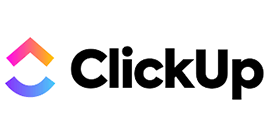
ClickUp aims to be a one-stop solution for all project management needs. It offers a wide range of features, including task management, time tracking, goal setting and even docs and notes functionality. If your team would be well-suited to an all-in-one project management solution, then ClickUp’s comprehensive approach would make it a strong alternative to Basecamp.
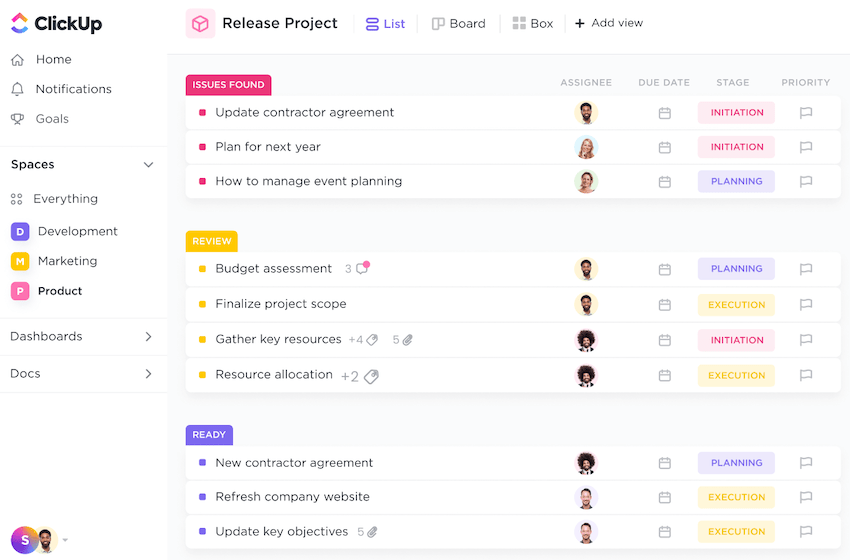
Features
- Comprehensive task management to keep all your tasks in one place.
- Time tracking and goal setting to keep your team focused and productive.
- Docs and notes functionality to centralize your team’s knowledge.
- Multiple customizable views (Figure C) to adapt to your team’s workflow.
Pros
- All-in-one solution, reducing the need for multiple tools.
- Customizable for different needs, making it adaptable to various workflows.
- Competitive pricing, offering a balance between cost and features.
Cons
- Can be overwhelming with so many features, which might require some time to fully explore.
- Interface can be cluttered due to the vast array of features, which might affect usability.
Pricing
ClickUp offers a free plan with 100 MB of storage. For more storage and features, its Unlimited plan is available at $5 per user per month, Business plan at $12 per user per month and Business Plus at $19 per user per month, all billed annually. Its Enterprise plan’s pricing is available on request.
For more information, read the full ClickUp review.
Wrike: Best for enterprise teams
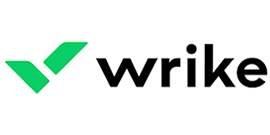
Wrike is a comprehensive project management tool designed with large teams and enterprises in mind. It offers robust features, including Gantt charts, workload view and custom dashboards. Wrike’s focus on enterprise-level project management, coupled with its scalability and strong security measures, makes it a compelling alternative to Basecamp for larger organizations.

Features
- Gantt charts (Figure D) and workload view to visualize project timelines and resources.
- Custom dashboards and reports for personalized data visualization and insights.
- Time tracking to monitor team productivity.
- Advanced integration capabilities to connect with your existing software ecosystem.
Pros
- Robust features for large teams, catering to complex project management needs.
- Scalable for large enterprises, making it suitable for growing organizations.
- Strong security measures to protect your project data.
Cons
- Can be complex to set up due to its extensive feature set.
- Higher price point, which might be a consideration for budget-conscious teams.
Pricing
In addition to a free plan, Wrike’s paid plans include the Team plan at $9.80 per user per month, billed annually, a Business plan at $24.80 per user per month, billed annually and an Enterprise plan with pricing available on request.
For more information, read the full Wrike review.
Teamwork: Best for client project management

Teamwork is a project management tool that shines when it comes to client project management. It offers features like client permissions, invoicing and a client portal. This focus on client work, coupled with its user-friendly interface and strong customer support, makes Teamwork a worthy alternative to Basecamp for teams that frequently collaborate with clients.
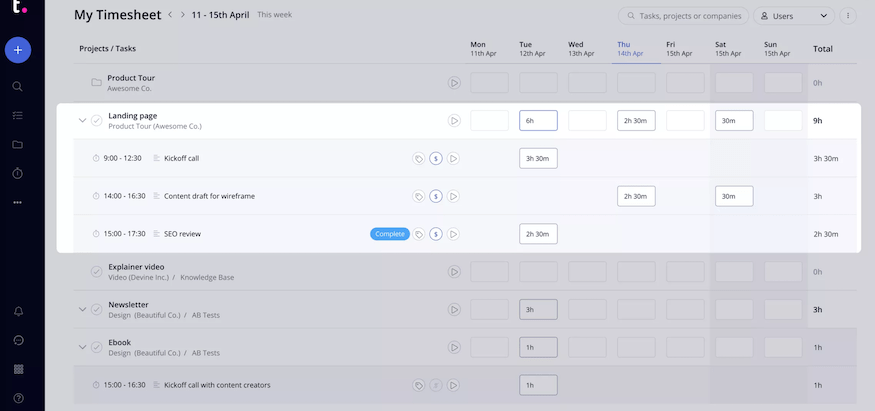
Features
- Client permissions and portal to facilitate client collaboration.
- Offers invoicing features to streamline billing processes.
- Task management and time tracking (Figure E) to keep your team on track.
- Delivers Gantt charts for visual project planning.
Pros
- Strong features for client work, enhancing client collaboration.
- User-friendly interface, making it easy for your team and clients to use.
- Its feature set makes it more than suitable for remote teams.
Cons
- Limited integration capabilities, which might require workarounds for some workflows.
- Some features are only available in the higher-tier plans, which might limit functionality for teams on a budget.
Pricing
Aside from a free plan, Teamwork offers the Starter plan at $5.99 per user per month, followed by the Deliver plan at $10 per user per month and the Grow plan at $18 per user per month, all billed annually. The Scale plan, however, requires you to request pricing information from Teamwork.
For more information, read the full Teamwork review.
Asana: Best for task management
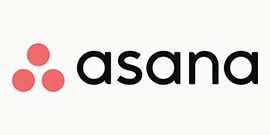
Asana is a project management tool that stands out for its comprehensive task management. It offers a simple, user-friendly interface and a wide range of task management features. This focus on task management, combined with its user-friendly interface and good free plan, makes Asana a strong alternative to Basecamp for teams that prioritize task management.
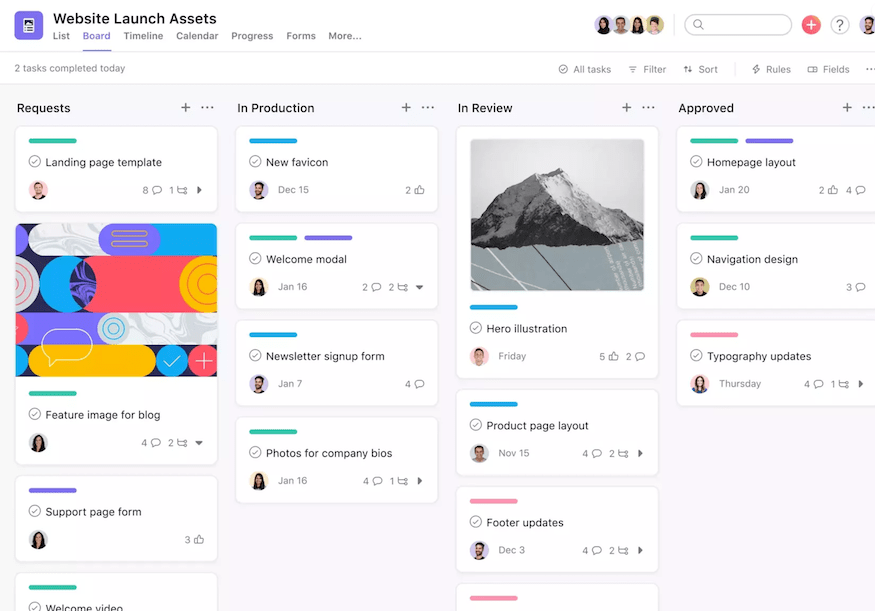
Features
- Comprehensive task management to keep all your tasks organized.
- Multiple views such as board (Figure F), timeline and calendar views to visualize your project from multiple perspectives.
- Automation and integrations to streamline your workflows.
- Advanced reporting for data-driven decision-making.
Pros
- It is easy to manage and track tasks thanks to its standout task management features.
- User-friendly interface, making it easy for your team to use.
- Good free plan, making it accessible for teams on a budget.
Cons
- Limited features in the free plan, which might require an upgrade for more functionality.
- Can get expensive for larger teams, which might be unideal for budget-conscious organizations.
Pricing
Asana provides a free Basic plan for individuals and very small teams. For more features, the Premium plan is $10.99 per user per month if billed annually. It also offers a Business plan at $24.99 per user per month if billed annually and an Enterprise plan with advanced features and controls, with pricing available on request.
For more information, read the full Asana review.
Is Basecamp worth it?
Yes! I found value in Basecamp as a project management tool, though it’s worth noting that it was for a simple project management use case. Its strength lies in its simplicity and ease of use. It offers a clean, intuitive interface that made it easy for me to get started without a steep learning curve. The tool’s core features, such as task management, message boards and schedules, among others, are straightforward and effective, making it a solid choice for teams looking to streamline their workflow and enhance collaboration.
However, it’s also important to consider what Basecamp doesn’t offer. While its simplicity is a strength, it can also be a limitation for teams that require more advanced features. For instance, Basecamp does not offer Gantt charts, a feature that many project managers rely on for visualizing project timelines. It also lacks certain customization options that some teams might find necessary.
In terms of pricing, Basecamp’s flat rate pricing makes it clear and predictable and having only two tiers of $15 and $99 per user per month makes pricing quite straightforward. But it’s worth noting that the $15 tier is slightly higher than most of the lowest pricing tiers of the alternatives covered.
Basecamp pros and cons
Basecamp offers a balance between simplicity and functionality. It’s a tool that is easy to use and offers a range of features designed to improve team collaboration and project management. However, like any tool, it has its strengths and weaknesses and what works well for one team might not be as effective for another. Here’s a summary of the main pros and cons of Basecamp:
Pros
- User-friendly interface makes it easy for teams to get started and intuitively use it.
- Flat pricing model can be cost-effective for individuals, freelancers and larger teams.
- Strong collaboration features like message boards and document storage.
Cons
- Lacks certain advanced features like Gantt charts.
- Flat rate might be limiting for users seeking more flexible pricing.
- Limited customization options compared to some alternatives.
Basecamp pricing
Basecamp offers two pricing tiers: Basecamp and Basecamp Pro Unlimited.
Basecamp
This tier is perfect for freelancers, startups and small teams. It provides 500 GB of file and document storage and operates on a monthly, pay-as-you-go basis. The cost is $15 per user per month. Since Basecamp only bills its subscribers for employees, you can invite guests for free.
Basecamp Pro Unlimited
Larger teams and teams looking to scale will find this tier to be more attractive than the previous tier as it offers additional features like 5 TB of file and document storage, round-the-clock priority support and the Admin Pro Pack for much more control of access and permissions. It costs a flat rate of $299/month if billed annually and does not charge per user. This means your whole team can use Basecamp Pro Unlimited for a single set price. However, should you want to subscribe to the month-to-month plan, it will cost you $349 every month.
Do you need a Basecamp alternative?
Whether you need an alternative to Basecamp depends on your specific needs and circumstances. If you’re looking for more advanced features, more customization options or a pricing model that appeals to you more, then one of the alternatives listed above may be a better fit for you.
For instance, if you’re a software development team, you might prefer Jira for its robust agile development features. If you’re a freelancer or a small team on a budget, you might find ClickUp or Asana’s free plans more appealing. If you’re a larger enterprise with complex project management needs, Wrike’s robust features and scalability might be more suitable.
Methodology
To deliver an unbiased comparison of the tools listed above, we created a shortlist of tools that cater to different types of teams and then compared their features, strengths and weaknesses. We then used verified user reviews and a hands-on feel for most of the tools to augment our findings and gauge user feedback for the products.
Featured partners
1 Wrike
Tackle complex projects with Wrike’s award-winning project management software. Break projects into simple steps, assign tasks to team members, and visualize progress with Gantt charts, Kanban boards, and calendars. Manage resource allocation and forecasting with software that’s easy to launch. Automation and AI features strip away time-consuming admin tasks so you can do the best work of your life. Streamline your practices, align your team, and ensure you hit deadlines and stay on budget.


